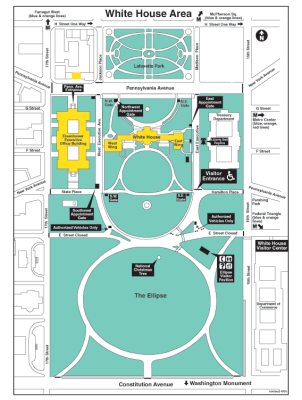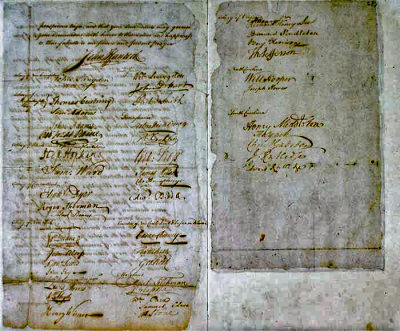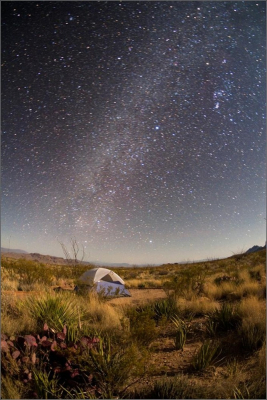Park News
The federal government shutdown
Not all the 433 National Park Service sites are closed, but several former park superintendents wish they were. In a letter sent to Interior Secretary Doug Burgum, they noted that during past shutdowns, when some parks stayed open despite limited staff, there were more incidents of vandalism, trash piled up, and visitor safety was compromised. With the newest personnel reductions (25% of the National Park Service’s permanent employees, according to the National Parks Conservation Association, it’s sure to happen again.
The changing of the leaves
If you crave seeing the fall foliage in our parks, Travel + Leisure and Forbes have some ideas for you. Check first to make sure the sites are open, and what the hours are.
It's not even Halloween but the Christmas stuff is already out
I started seeing it mid-September!
The Park Service has to work that far in advance for the annual National Christmas Tree Lighting Ceremony. This is held on the Ellipse, part of the Park Service’s White House and President’s Park. As of today, information about the lottery for tickets to this the event hasn’t been posted yet, but keep checking the site if you’re interested in attending.
One hundred years for Mount Rushmore National Memorial
A century ago, on October 1, 1925, the area in South Dakota’s Black Hills where four presidential faces would be carved was dedicated as a national monument. The actual sculpting, conceived and begun by Gutzon Borglum, didn’t begin until two years later. Read more about its construction here.
By the way, do you know why Borglum chose those specific Commanders-in Chief, and what each stands for? Washington, the most prominent figure, embodies America’s founding, Jefferson, its growth (think Louisiana Purchase), Lincoln the country’s preservation, and Theodore Roosevelt its development.
Mount Rushmore continues to be a sore subject with the Lakota Sioux. The 1868 Treaty of Fort Laramie returned the Black Hills, known by the Native Americans as Paha Sapa, to the Sioux. In exchange for giving up thousands of acres of land, they were “allowed” to relocate their reservation there, a sacred space for them. That pact was never rescinded so it remains valid, but obviously was never enforced. The reason? Gold was found in them there hills. FYI: Wyoming’s Fort Laramie is a national historic site in the Park Service.
Some of you may remember the 1970 American Indian Movement protest at Mount Rushmore about this issue. AIM leaders Dennis Banks (pictured) and Russell Means led the demonstration.

The lead-up to America’s 250th birthday in our national parks
In July 1775, the Continental Congress adopted what’s called the Olive Branch Petition (note John Hancock’s large signature, just as is on the Declaration of Independence). The paper aired the American patriots’ grievances, and entreated King George III to resolve the crisis between Great Britain and the colonies.

The King didn’t even bother to read the petition. But what he did do was issue a proclamation the following month, declaring the revolt in American was the work of those “misled by dangerous and ill-designing men”…who forget “the allegiance which they owe to the power that has protected and sustained them…by open and avowed rebellion.”
During this month 250 years ago, in an address at the opening of Parliament, King George offered his own magnanimous olive branch: “When the unhappy and deluded multitude [in America] become sensible of their error, I shall be ready to receive the misled with tenderness and mercy.”
The song “You’ll Be Back” from the musical Hamilton is based on this speech, sung by the character of King George.
Following the battles of Lexington and Concord in April 1775, British soldiers occupied by Boston in a standoff between them and the patriot troops. This eleven-month period became known as the Siege of Boston.
Since July 1775, after being appointed Commander-in-Chief of the Continental Army, George Washington was stationed in Cambridge, Massachusetts in what's now the Park Service’s Longfellow House-Washington’s Headquarters National Historic Site (yes, poet Henry Wadsworth Longfellow later lived there). In October that same year, by his own authority and at his own expense, Washington organized a small fleet to fend off British ships trying to resupply their dug-in soldiers. On the schooners, he hoisted this pine tree flag.
This banner is also known as the Appeal to Heaven flag. The phrase, which has seen a resurgence in recent years, comes from English political philosopher John Locke’s writings of 1689: “Where the body of the people, or any single man, is deprived of their right, or is under the exercise of a power without right, and have no appeal on earth, then they have a liberty to appeal to heaven.”
 Minute Man National Historical Park and Boston National Historical Park in Massachusetts are where to find more information about these events. In September, my husband and I walked the Freedom Trail (5 miles round trip!).
Minute Man National Historical Park and Boston National Historical Park in Massachusetts are where to find more information about these events. In September, my husband and I walked the Freedom Trail (5 miles round trip!).
October’s Sub-par calendar park review
“It rained on me in the friggin’ desert!” is the incredulous review of Big Bend National Park in Texas. In its defense, the park does have indoor places to go to—its four Visitor Centers and the Fossil Discovery Exhibit,

When the sun’s out (fall through spring bring cooler temps), there are plenty of outdoor activities. And because the park is so remote, it’s one of the best places in the lower 48 states for stargazing.
Life’s Sun and Rain
I love the verse in Matthew 5:45 that says God brings both sun and rain on the evil and good alike. This is His “common grace,” as the phrase goes, but really, there’s nothing common about it. God’s undeserved favor, kindness, and goodness extend not only to those who follow Him, but also to people who don’t, either openly or indifferently.
That alone should move all of us to thankfulness.






